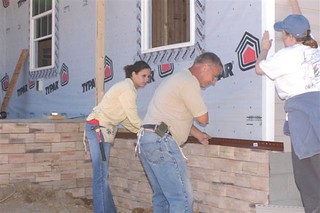
One day –whether it’s six months, a year, or two years from now– arts organizations will have emerged from their bunkers to once again make in-person arts experiences indoors. The trauma that we as individuals and as an industry have experienced between last March and then will be the backdrop for whatever that reality looks like.
Many are making big picture suggestions: a 21st-Century WPA program, a cabinet-level department devoted to culture, or a cultural affairs office in the White House. Those are all intriguing ideas; I just don’t believe there is the level of public support for our work that would be required to make any of it a political reality.
Plus, beyond advocating for them, there’s nothing that arts organizations can do about making them happen. They’re not under our control. I’m most concerned about the things that arts organizations can do–on their own–to make a more secure future for themselves. Building back better implies (as it should) that we do things.
At this point I would implore arts organizations not to return to pre-pandemic practices with nothing more than modest tweaks. This is a time for serious reconfiguring. So let me suggest three categories for new or significantly expanded approaches.
- Commit to Community: The economic, demographic, and political headwinds have been building for decades. To be sustainable, we must vastly expand our base. The NEA’s The Art of Reopening contains the following as its first recommendation “Strengthen ties with your immediate community. Aligning arts programming with local community needs is paramount . . . .”
Sounds like a page out of my hymnal, right? Connect and Matter are only my most recent posts highlighting the need for and ways to do so. We need new habits of mind that see our organizations as providers of resources that can and should address community interests. And, of course, before we can wisely apply those resources, we need to get to know the communities with which we hope to partner. Otherwise we can be blindly presenting things no one wants or needs. (And probably making ourselves disliked at the same time.) - Commit to Equity: The days when society would tolerate (much less support) institutions catering almost exclusively to the wealthy, white world are gone. And they will not be returning after the pandemic. On the contrary, the national mood is such that if we are not seen as actively supporting the furtherance of justice we’ll be overwhelmed by a cultural tsunami. [See There Is No “Try”]
- Commit to Participation: Much of our sector has been almost exclusively focused on the provision of spectator experiences. A prime means of counteracting the tragedy of the last two generations in arts education is to find ways to get people doing the arts. This will build solid relationships between them and the organizations that provide the opportunities. In some cases it may also, as I’ve seen people suggesting recently, provide (not insignificant) new revenue streams. [See Doin’ It]
There you have it. Three categories of things that are doable, can be adapted to the specifics of an arts organization and its communities, and will make our institutions far stronger for the long run.
Build Back Better [aka Engage!]
Doug
Photo:


Excellent. If, in a year, the nation sees the arts as an elitist escape for the privileged – as they do right now – the whole industry will have taken 10 steps back into the 1950s. My only hope is that those that do not wish to run nonprofit arts organizations with a completely different – and permanent – lens, even at the cost of some of the white folk, take this opportunity to leave their non-impactful nonprofit and become a freelance artist. A nonprofit’s first responsibility is to making a measurable difference to its community, an impact that has nothing to do with commercial metrics (butts-in-seats, positive economic impact, national educational studies). It would be tragic if the sector hid from this once-in-a-hundred-year opportunity to undertake positive, radical change.
Doug:
Thank you again for this. Again, right on the mark.
I’ve heard that rebuilding a house that has been damaged is much more difficult than building a new one. We need to discard practices, policies and programs. Many have been important to our past, but should not be part of our future. Deciding what to keep (and not to keep) will be one of the most difficult and painful parts of these.
Many of us, myself included, disdain being uncomfortable. Yet that’s what we’re called to do. The Rev. William Barber is calling for a “Third Reconstruction”. That will be the journey that I’ll be on.